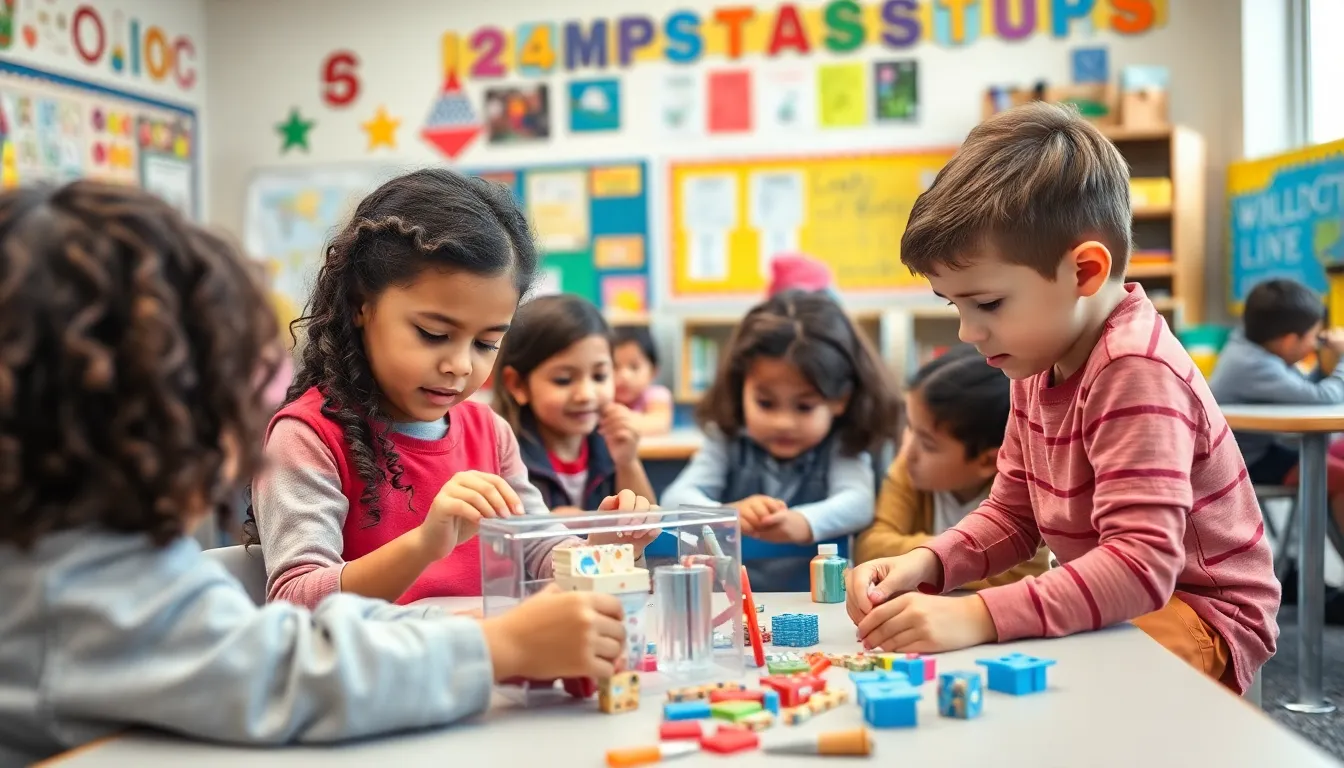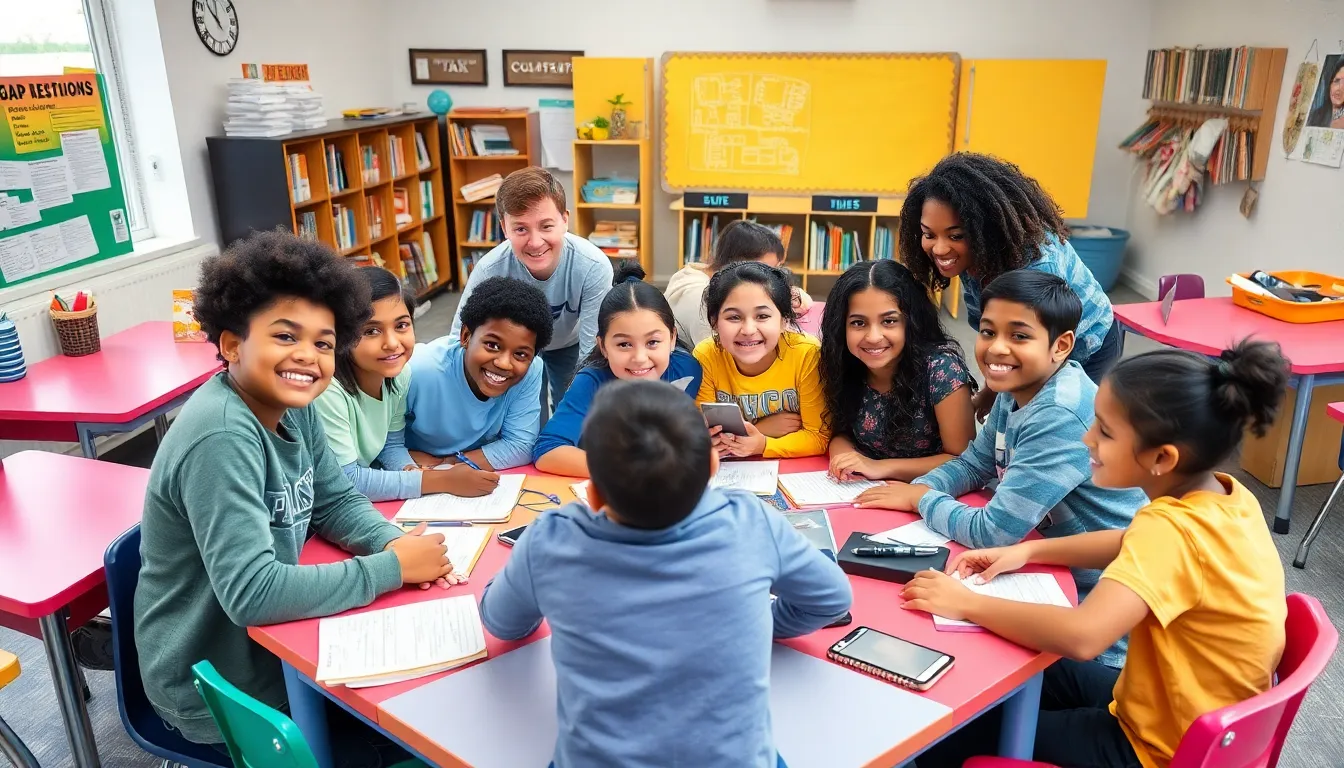In a world where one-size-fits-all solutions rarely fit anyone, differentiated instruction emerges as the superhero of the classroom. Imagine a teaching approach that tailors lessons to meet the unique needs of every student, transforming the mundane into the magical. It’s not just about keeping everyone awake during math class; it’s about igniting curiosity and fostering a love for learning.
Table of Contents
ToggleOverview of Differentiated Instruction
Differentiated instruction serves as a responsive teaching strategy that meets individual student needs within a classroom. This method transforms standard lessons into more interactive and personalized learning experiences.
Definition and Purpose
Differentiated instruction involves tailoring teaching methods, resources, and assessments to accommodate diverse learners. This approach targets the variability among students by addressing their interests, readiness levels, and learning profiles. Purposefully, it seeks to enhance each student’s academic engagement and achievement. Teachers adapt their techniques to ensure every learner has access to the curriculum, promoting better understanding and retention. Overall, differentiated instruction cultivates an inclusive classroom environment, enabling students to thrive collectively.
Key Principles
Key principles of differentiated instruction emphasize flexibility and responsiveness. Teachers assess student readiness to determine appropriate learning paths and activities. Another principle involves varying instructional strategies, offering choices in assignments and projects based on student preferences. Grouping students strategically fosters collaboration and peer learning, maximizing diverse talents within the classroom. Continuous assessment informs future instruction, helping educators modify approaches as needed. Ultimately, these principles create a tailored educational experience that respects individual learning journeys.
Benefits of Differentiated Instruction
Differentiated instruction offers numerous advantages that enhance the overall learning experience. It fosters an inclusive environment tailored to diverse student needs and preferences.
Enhanced Student Engagement
Engagement increases significantly in classrooms where differentiated instruction is implemented. Teachers match content with student interests, ensuring lessons resonate with learners. Options for choice in assignments motivate students to take an active role in their education. Collaboration occurs more naturally when students participate in strategic group activities. These practices create an environment where learners feel valued and motivated to contribute, leading to deeper engagement in the material.
Improved Learning Outcomes
Learning outcomes improve when instruction adapts to individual needs. Research shows that students tend to perform better academically when lessons cater to their unique strengths and weaknesses. Teachers assess student readiness and adjust strategies accordingly, ensuring effective learning paths. Personalized feedback enhances student understanding and retention of the material. Consequently, differentiated instruction not only supports academic achievement but also develops critical thinking and problem-solving skills essential for future success.
Strategies for Implementing Differentiated Instruction
Implementing differentiated instruction requires carefully chosen strategies that cater to the diverse needs of learners. Two effective approaches are flexible grouping and varied instructional methods.
Flexible Grouping
Flexible grouping involves organizing students into different configurations based on their learning requirements and goals. Groupings may change frequently, allowing students to collaborate with various peers. For instance, teachers often form homogeneous groups for targeted support in areas like reading, while heterogeneous groups encourage diverse perspectives during project work. This strategy fosters collaboration and social interaction, enhancing peer-to-peer learning. Additionally, grouping students enables teachers to tailor instruction more effectively, ensuring every learner receives the necessary support. Both skill levels and interests can guide these groups, maximizing engagement and productivity.
Varied Instructional Approaches
Varied instructional approaches enhance learning experiences by incorporating diverse teaching methods that cater to different learning styles. Teachers often implement strategies such as direct instruction, hands-on activities, and multimedia resources to engage students. Each method accommodates diverse preferences, increasing interest and understanding. For example, some students may excel with visual aids, while others thrive in kinesthetic environments. Personalizing lessons through choice in assignments also fosters motivation. By matching approaches to individual needs, teachers promote deeper comprehension and retention. Incorporating technology can further enrich instruction, making learning more interactive and inclusive, ultimately benefiting the entire class.
Challenges in Differentiated Instruction
Differentiated instruction presents several challenges that educators must navigate. These challenges can impact the effectiveness of this teaching approach.
Common Misconceptions
Many people believe that differentiated instruction only entails modifying assignments for students. This notion oversimplifies the concept. Effective differentiation requires understanding each student’s unique learning needs and preferences. Teachers often think differentiation means lowering standards; in reality, it involves raising expectations by offering varied paths to success. Misunderstandings also include the idea that differentiation is only for struggling students. In fact, all learners benefit from tailored instruction that stimulates their interests and abilities. Recognizing that differentiation creates balanced educational experiences fosters better acceptance of this instructional method.
Barriers to Implementation
Implementation of differentiated instruction can face significant barriers. Limited resources often hinder educators from accessing necessary materials and technologies. Time constraints also pose challenges, as teachers manage diverse needs within their existing schedules. Professional development opportunities may lack focus, leaving educators uncertain about how to effectively differentiate lessons. Additionally, classroom sizes frequently complicate the ability to provide individualized support. These barriers may contribute to reluctance in adopting differentiated strategies; addressing them is crucial for successful implementation.
Conclusion
Differentiated instruction is a vital approach that empowers educators to meet the diverse needs of their students. By personalizing learning experiences and fostering engagement, it creates an inclusive environment where every learner can thrive. This method not only enhances academic performance but also nurtures critical thinking and problem-solving skills essential for future success.
While challenges exist in implementing differentiated instruction, the benefits far outweigh the obstacles. With commitment and strategic planning, teachers can effectively adapt their methods to inspire curiosity and a love for learning in all students. Embracing this approach ultimately transforms classrooms into dynamic spaces that celebrate individual learning journeys.





